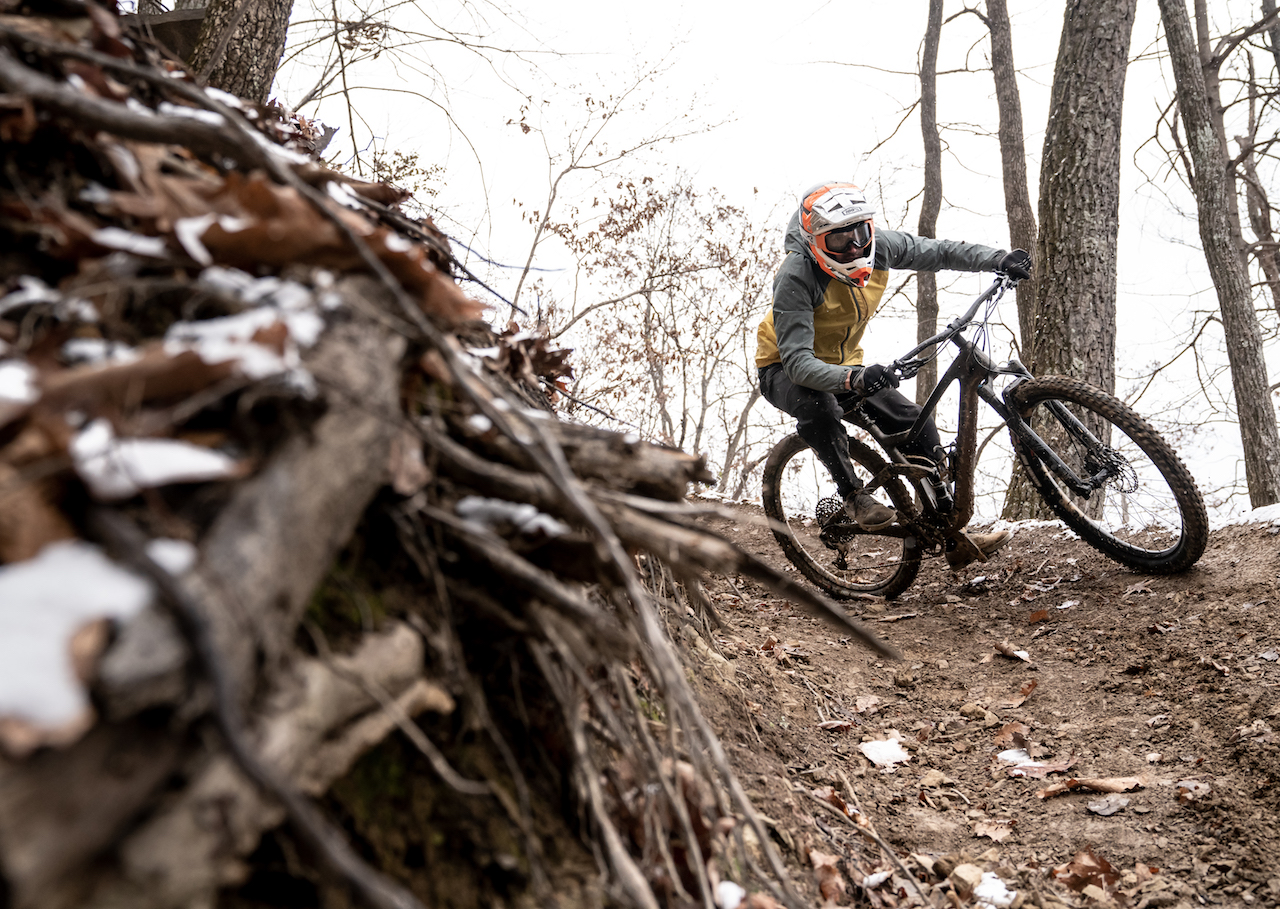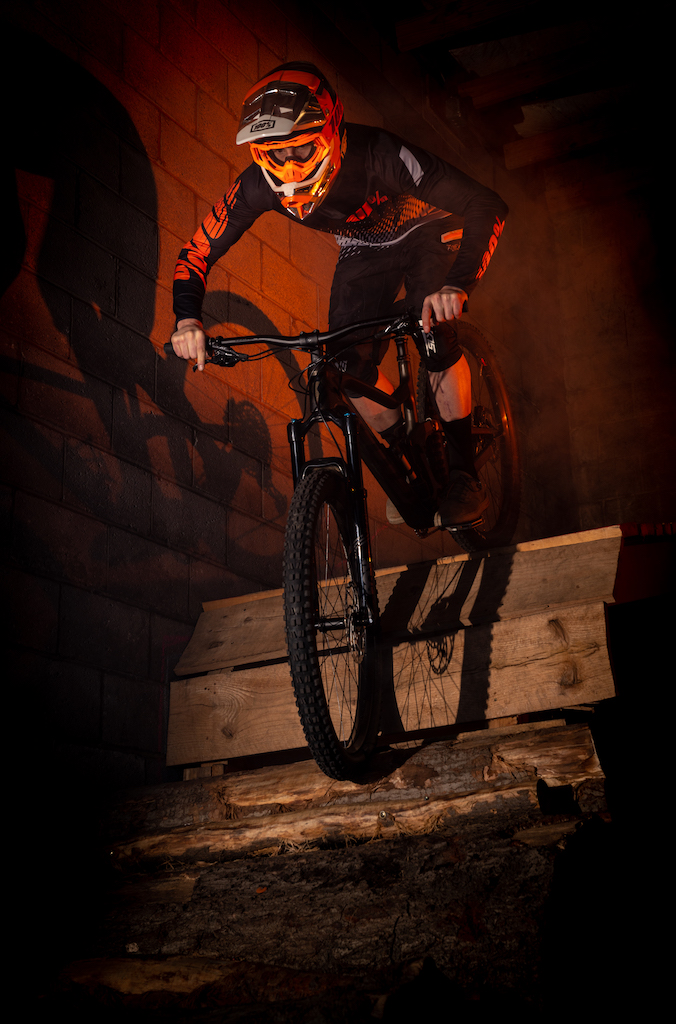Scott Ransom 910 Bike
Originally posted on August 6, 2019 at 9:38 amBy Scott Williams
As an avid snowboarder in the winter months, charging down the mountain on two wheels in summer was a natural progression. It’s the same set of teary eyes trying to weave through the forest and somehow putting the blindfold over the part of your brain that detects fear, the amygdala. Each year, I gravitated more and more towards planning trips that involved the bike in lieu of the board. Once broken free from the constraints of lift lines and designated “play” areas, it’s difficult going back to a state of dependence. Scott understands the desire to be self-sufficient, and that’s exactly what the Swiss company was after when designing the Ransom. The company wanted a bike that was able to be pedaled up the mountain efficiently (i.e., the Alps) and not be limited when charging back down to the bottom. According to Garth Spencer, marketing manager at Scott, the Ransom “really is the do-it-all bike for your gravity oriented rider. They can take it out on the epic rides with tons of climbing and hit the bike park the next day on the same bike.”

The Ride
With 170 mm of travel fore and aft, it’s not a dedicated downhill bike, but for the majority of riders, that’s not an issue; bigger is not always better in this scenario. The testing grounds of the Windrock Bike Park were not the standard fast and flowy trails we’ve come to expect from a bike park. The trails are mostly unmanicured terrain that is techier than fast with a lone run offering the traditional flavor of flow with drops, berms, and tabletops.

The varying terrain was a great opportunity to test the Ramp Adjust Lever, which Scott worked closely with Fox to develop in the NUDE TR shock. This feature allows riders to easily change how progressive or linear the shock is by an on-the-fly air volume adjustment. While not the most convenient lever to switch while riding, since it’s located near the bottom of the shock, it would be an easy adjustment between enduro stages or at the trailhead. For a more progressive feel, the second air chamber is closed off, creating a nice ramp-up and more support at the end of the stroke, which is ideal for high-speed compressions, more pop and absorbing larger hits. When the outside chamber is open, the shock is more linear, helping keep the rear wheel planted and in control over slower, chunkier and raw terrain.

On the trail, the Ransom was quiet and easy to fall into a groove with, never feeling like it got in the way of itself or became a limiting factor. Even with the big 29er hoops and 2.6-inch tires, the Ransom felt fast and responsive—more aligned with shorter-travel bikes, which could be due to the relatively light, 6.7-pound frame of the Ransom 910 model and shorter fork offset. To achieve a lightweight frame without sacrificing strength, Scott optimized the frame construction so that items requiring more strength are close to one another; it built additional strength into those areas while allowing the rest of the frame to be lighter. An excellent example of this is the main pivot, bottom bracket, and trunnion mount area. Scott also opted for the shorter 44 mm offset fork versus a 51 mm offset found on the lesser travel Genius model. The more recent trend of running a reduced fork offset with slacker head angles helps bring that front wheel back under the rider putting additional weight on the grips, reducing wheel flop and creating a more nimble-riding bike.
Everything else: city-parks, big mountains, small mountains, and backyard tom-foolery.
I prefer to underbike, so a 120-130 mm hardtail or full-suspension would typically be the beez-neez for this type of terrain. Just enough travel to get loose and recover from bad lines without sacrificing too much energy on the climbs back to the top. Surprisingly, the Scott Ransom 910 was just as much fun here as it was at the downhill park.
The Ransom’s versatility is a result of the TwinLoc system. Yes, at first sight, the three separate triggers for the dropper and suspension lockout look cumbersome and even caused some heart palpitations for this closet Luddite, but it fucking works. Being able to adjust the bike’s suspension characteristics during the ride with a simple lever became second nature to the point that it was used as frequently as, if not more often than, the dropper.
In a nutshell, TwinLoc is a remote handlebar switch for the fork and shock that allows for three separate modes: Descend, Traction Control and Lockout. When in Descend mode, both positive air chambers in the shock are open, and the fork is wide-open for full travel. One caveat to this system is for those who like to fine-tune their suspension. There is no high-speed compression nor high-speed rebound adjustment for the fork, and the shock has no compression adjustment.

It should be noted that the Ramp Adjust Lever I spoke of earlier is only in effect when the suspension is in Descend mode. Switching into Traction Control mode, the second air chamber of the shock is closed off, which reduces air spring volume and knocks the travel from 170 mm to 120 mm. The reduction also affects the geometry of the bike by steepening the head angle and seat tube angle by 1.5° and raising the bottom bracket height by 20 mm. This firms things up a bit for better pedaling stability and reduces the opportunity for pedal strikes. In Lockout mode, it may not climb like a hardtail, but it sure as hell doesn’t climb like a 170 mm trail bike. I was more than happy to drop a few gears and climb out of the saddle on fire-road climbs with no energy-sucking bob.
Conclusion
Initially, I had my reservations with both the TwinLoc remote-controlled suspension system and a 170 mm travel bike that’s intended to climb efficiently. Little did I know, all reservations would be quickly squashed. The company’s TwinLoc system is primarily what sets the Ransom apart and makes the bike so much fun to ride on everything from a downhill park to pedally city green space with nothing more than a flick of a switch.
It’s hard not to use all the marketing buzzwords here: The Scott Ransom 910 is a well-executed design with quality components at a reasonable price point. The bike not only is capable of being ridden on rolling and punchy singletrack as well as long jeep-road climbs with gnarly, butt-puckering descents, it also does each of these exceptionally well.
Scott Ransom 910
Price: $5,400
Sizes: S, M, L (tested), XL
Online: scott-sports.com
Tester: Scott Williams
Age: 33
Weight: 168 lbs.
Height: 5’ 11”
Inseam: 32.5”
Reach: 18.6”
Stack: 24.5”
Top Tube: 24.9”
Head Tube: 65°
Seat Tube: 75.5°
BB Height: 13.6”
Chainstays: 17.2”
Weight: 31 lbs.without pedals, specs based on size tested in High BB setting